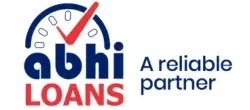What is the process of lien marking?
Lien marking is an financial process lenders use to secure loans against various assets. It acts as a legal claim on an asset, preventing the owner from selling or transferring it until the lien is settled. This practice is common in loan against securities such as mutual funds, fixed deposits, and insurance policies.
In this article, we will explore the lien marking process, its importance, and how it applies in different financial contexts, including mutual funds and NACH (National Automated Clearing House).
Lien Marking Meaning
Lien marking is the method by which a financial institution establishes a legal hold on an asset offered as collateral for a loan. This stops the asset owner from liquidating or transferring the asset until the lender’s commitment is met. Lien marking guarantees that the lender has a legal right over the pledged asset, reducing credit risk and providing security for the borrowed amount.
The Process of Lien Marking
The process of lien marking changes depending on the type of asset being pledged. However, the common steps involved remain largely the same across different financial instruments.
- Application for a Loan Against an Asset The borrower applies for a loan using securities like mutual funds, fixed deposits, or insurance policies as collateral. The financial institution evaluates the eligibility and value of the asset before approving the loan.
- Request for Lien Marking Once the loan is approved, the lender requests the asset holder (such as a mutual fund house, bank, or insurance company) to mark a lien on the pledged asset. This is done to prevent unauthorized sales or redemption.
- Verification and Approval by Asset Holder The asset holder (e.g., mutual fund registrar, bank, or insurer) confirms the lien request and marks the lien against the pledged asset. This process ensures that the lender has a legal claim over the asset until the loan is repaid.
- Lien Confirmation After marking the lien, the asset holder notifies both the borrower and the lender. The borrower retains ownership of the asset but cannot sell, redeem, or transfer it until the lien is remove.
- Loan Disbursement Once the lien is successfully marked, the lender disburses the loan amount to the borrower.
- Repayment and Lien Release The borrower repays the loan according to the agreed terms. Upon full repayment, the lender requests the asset holder to remove the lien, restoring full ownership rights to the borrower.
Lien Marking in Mutual Funds
Mutual funds can be pledged as collateral for loans, and the lien-marking process plays a essential role in securing these transactions. Here’s how it works:
- The mutual fund investor comes to a financial institution and requests a loan against mutual fund units.
- The lender assesses the fund’s value and determines the loan-to-value (LTV) ratio.
- Upon approval, the lender requests the mutual fund registrar (CAMS or KFintech) to mark a lien on the pledged units.
- The mutual fund house marks the lien and informs both parties.
- The investor cannot redeem or switch the pledged units until the lien is remove.
- After loan repayment, the lender instructs the mutual fund house to remove the lien, restoring the investor’s rights over the units.
Lien Marking for NACH
The National Automated Clearing House (NACH) facilitates electronic payments and recurring transactions, and lien marking in this context ensures that a specific amount remains available for scheduled payments. Here’s how it applies:
- Setup of NACH Mandate: The borrower authorizes automatic payments towards loan EMI or other obligations.
- Lien Marking on Bank Account: The bank marks a lien on the required balance to ensure sufficient funds for automatic debits.
- Fund Deduction on Due Date: The amount is automatically deducted as per the mandate, reducing the risk of default.
- Lien Removal Post Payment Completion: Once all scheduled payments are made, the lien is lifted from the bank account.
Legal and Regulatory Aspects of Lien Marking
Lien marking is governed by various financial regulations to protect both lenders and borrowers. Financial institutions must comply with guidelines set by regulatory bodies such as the Reserve Bank of India (RBI) and the Securities and Exchange Board of India (SEBI).
These regulations ensure transparency and fair practices in lien marking processes. Borrowers should also be aware of their rights and obligations when pledging assets to avoid any legal complications.
Challenges and Risks of Lien Marking
While lien marking provides security to lenders, there are certain challenges and risks associated with it:
- Market Fluctuations: The value of pledged assets like mutual funds or stocks may fluctuate, affecting the loan-to-value ratio.
- Limited Liquidity: Borrowers cannot sell or transfer the pledged asset until the lien is removed, restricting financial flexibility.
- Legal Complications: If the borrower defaults, the lender has the right to liquidate the asset, which may lead to financial loss for the borrower.
- Processing Delays: Lien marking and removal processes may take time, causing inconvenience for both lenders and borrowers.
Best Practices for Borrowers and Lenders
To ensure a smooth lien marking process, borrowers and lenders should follow the best practices:
- For Borrowers:
- Understand the terms and conditions before pledging assets.
- Keep track of repayment schedules to avoid default.
- Ensure timely communication with lenders to resolve any issues.
- For Lenders:
- Conduct proper due diligence before approving loans against pledged assets.
- Provide clear and transparent terms to borrowers.
- Streamline lien marking and removal processes for efficiency.
Conclusion
Understanding the lien marking process is important for both borrowers and lenders. Whether used in mutual fund loans, NACH mandates, or other financial transactions, lien marking provides security and transparency in financial transactions.
Borrowers should be aware of their responsibilities and ensure timely repayment to avoid complications associated with liens. By knowing how lien marking works, investors and borrowers can make informed financial decisions while leveraging their assets effectively.
As the financial landscape evolves, technology-driven solutions are expected to make lien marking more efficient and secure, benefiting all stakeholders involved.

